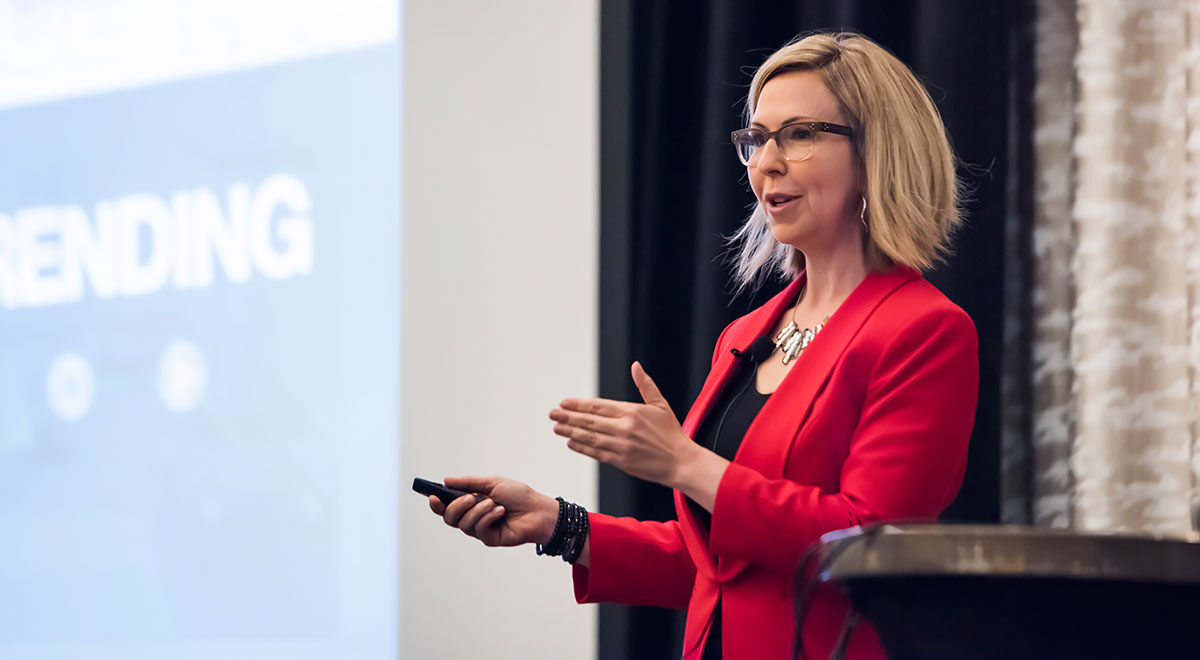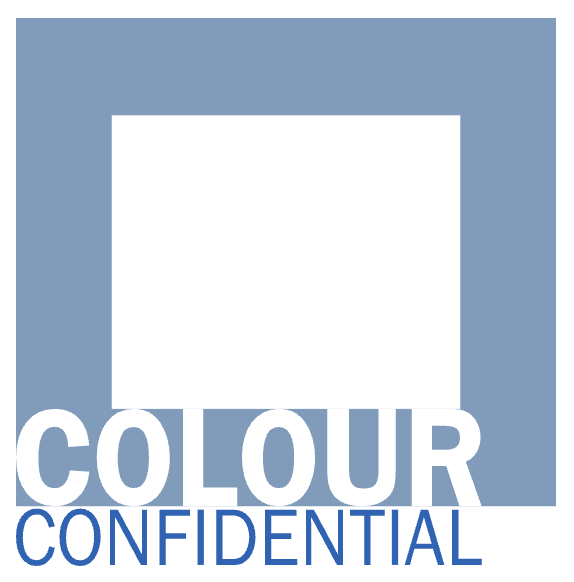Audience response meets elearning design to captivate the audience


- Location
- Nationwide
- Size
- 100+
- Use case
- Corporate learning & development
Designer Jane Lockhart and elearning designer Ralph Hinkle team up to deliver a powerful presentation using elearning design principles
Jane Lockhart knows design. In addition to running an award-winning design firm in Toronto, Jane is Creative Director and host of Color Confidential on HGTV and the force behind the Jane Lockhart Platinum Series of eco-conscious luxury furniture.
Ralph Hinkle knows elearning design. Ralph is the Education Manager at Produce Marketing Association, where he designs engaging education programming and presentations for PMA’s live events.
So, when Jane was asked to give a presentation on consumer trends in the floral industry at PMA's Fresh Connections: Floral Miami, where floral buyers and growers come together to learn about the state of the industry, Ralph had one question for her:
"Are you willing to jump on this bandwagon with me, and turn your presentation into something more interactive and engaging?"
Ralph elevated an already impressive presentation by using Poll Everywhere to facilitate audience feedback. Plus, the entire session integrated with Articulate’s Storyline, an interactive course builder.
How do you apply elearning design principles to a keynote presentation?
Instead of a one-size-fits-all approach, Ralph combined elearning best practices with Jane's mastery of the material to craft a compelling experience.
First, he sprinkled polling throughout the presentation, rather than lumping it all together. Staggering polls this way brings wandering minds back into the fold.
Next, he made sure the presentation aligned with the audience's goals and, to an extent, their personalities.
Tailor polling to your audience by clarifying the purpose of each poll.
Ralph didn't use polling merely for the sake of polling. Instead, he thought strategically about the goals of each stage of the presentation, then tailored his polls to meet those goals.
"We used polling on a case-by-case basis, because it’s a versatile tool, but it can be used in different formats. So in this one it’s for engagement, but it’s also to get [the audience] thinking, get them to be contemplative on evaluating themselves on a particular topic."
In some cases, polling will be the best way to achieve a learning goal. In some cases, it might not.
Case in point: conversation and a chance to network were integral to Floral Miami, which tends to be a friendly, lively bunch. So Ralph built roundtable discussions into the presentation, using case studies to break the audience into discussion groups. That didn’t require polling.

At other points in the presentation, polling perfectly suited Ralph’s goals – for example, defining clear, consumer-perceived markets. Jane used these as discussion points to align the audience’s observations with her content.
In the past, Ralph and his speakers have also used polling to breakdown perceived notions. For example, when the discussion moves to Millennial consumer habits, a poll is deployed to gather audience consensus on a Millennial habit. Once the poll shows a consensus, however, the speaker will show the audience the flaw in that thinking, and how it is affecting the floral industry.
Seamless integration with Storyline
Being an elearning designer, Ralph likes to make extensive use of Storyline. The ultimate goal of the presentation was to turn it "into a self-contained module [within Storyline] after the event so that you had a seamless experience."
Ralph created his polls on the web, then copied the shareable URL for each poll, inserting each as a web object within Storyline.
"I really wanted to have all the engaging functionality that Storyline provides."
To add a little sizzle, Ralph concealed the poll results until about midway through each one, then revealed them so the crowd could see the poll come alive all at once.
How can you do this?
- Mark specific opportunities for polling in your presentation. Use polls when you see an opportunity to get to know the audience, discuss a particularly noteworthy topic, or just to reward your audience after a complex discussion.
- Create activities using the best poll type for each particular use. For instance, word clouds can help bring focus to a topic, while ranking polls or Q&As can help you decide which topic matters most to your audience.
- Embed the activities into Storyline. Click “Present” from the poll editing view, then select “Embed poll” from the menu. On the resulting page, find the code for a “live chart widget.” Add that code to Storyline.
Poll Everywhere for learning and development
Power your next professional development training with live audience feedback.